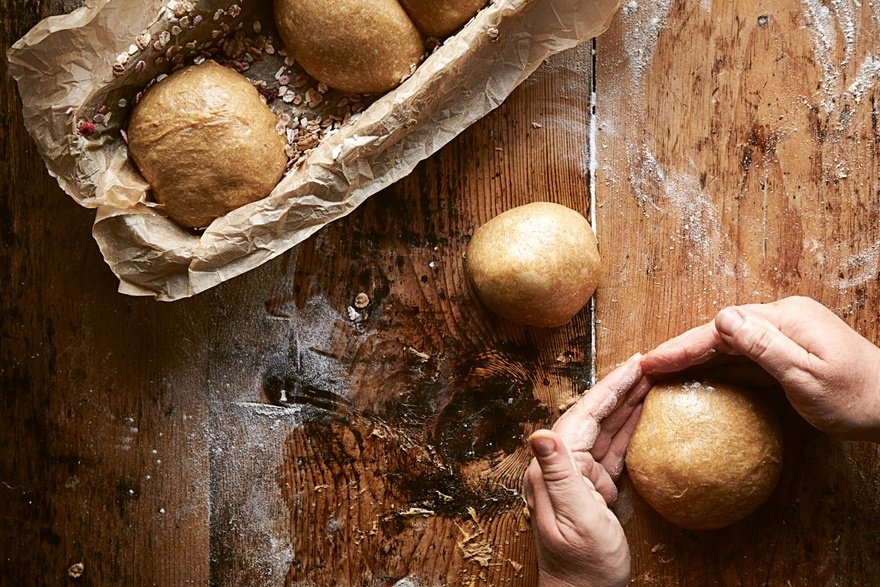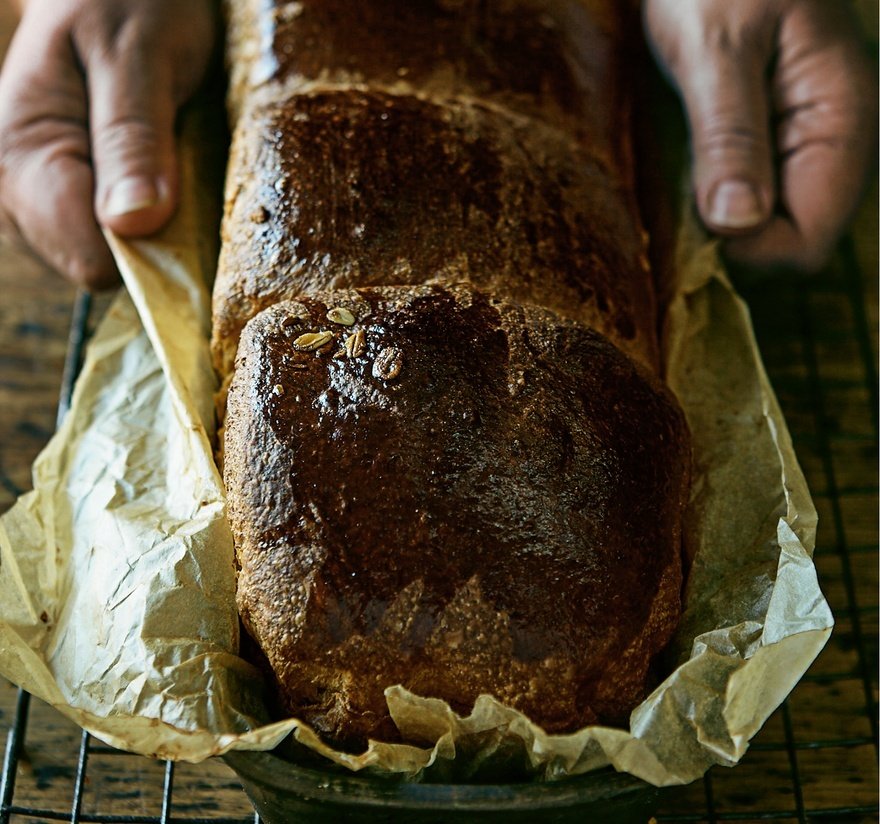Recipe: brioche from The Sourdough School: Sweet Baking
Taken from The Sourdough School: Sweet Baking by Vanessa Kimbell
In brioche, the texture of the dough becomes light and the structure reflects the long-chain sugars that form during fermentation. This long fermentation and inclusion of wholegrain slows down the rate of assimilation of carbohydrates and increases resistant starch. The microbes also convert the sugar into lactic and acetic acid, so this will have a more moderate effect on blood sugar than its white yeasted counterpart.
The gut factor A more moderate effect on blood sugar than other brioche recipes.
Diversity score Ingredients 7; Botanical Blend 1; total: 8
For the Botanical Blend no 1
Makes 1kg
- 200g any organic, stoneground, wholegrain flour
- 800g organic, white flour, 12%-13.5% protein
Sieve the flours together and use immediately.
For the leaven
- 90g Botanical blend no 1
- 100g water, plus an additional 10g-20g if needed, at 34°C
- 60g triple-refreshed sweet starter
For the brioche
- 600g Botanical blend no 1
- 150g water, plus an additional 10g-20g if needed, at 28°C
- 275g egg yolks, at room temperature
- 25g runny honey
- 8g salt
- 250g unsalted butter, at room temperature, plus extra for greasing
- 175g coconut sugar or granulated sugar (coconut sugar can be much more challenging to work with)
- Fine polenta, for dusting
- 1 beaten egg, to glaze
Desired dough temperature 28°C
Schedule
Day 1
8am Refresh starter (first build).
9pm Refresh starter (second build).
Day 2
8am Refresh starter (third build).
6pm Make leaven.
9pm Mix dough, then prove overnight and for most of the next day.
Day 3
6pm Transfer the dough to the fridge.
9pm Shape the dough and place in tins.
Day 4
8am Bake.
Make the leaven by mixing together the flour, water and starter. Stir, cover and leave at an ambient temperature for three hours.
When you are ready to mix the dough, make sure all your ingredients are at room temperature. Place the flour, water, leaven, egg yolks and honey in the bowl of a stand mixer and use the dough hook on a low speed to combine them. The dough will be stiff. Gradually increase the speed to the highest setting and continue to mix for 8-10 minutes. Add the salt, then reduce the speed to medium and gradually add the butter, mixing well and resting between each addition.
Use the windowpane test to check that the dough is developed. With slightly wet hands, take an egg-sized piece of dough and gently spread it between your fingers. It will feel soft and silky and, as you pull it, it should stretch. If the gluten is strong enough, it will become transparent and you will be able to see light through it, hence the name ‘windowpane'.
If it needs further development, mix for a few minutes on medium speed and check again. Once fully developed, add the sugar in increments, mixing on a slow speed until incorporated. Cover the bowl and leave on the kitchen work surface to prove overnight and most of the next day.
Pop the dough in the fridge for about three hours before you shape it. Grease two 24 x 12 x 8.5cm, good, heavy-gauge loaf tins with butter and dust with fine polenta. Remove the dough from the fridge and turn out onto a lightly floured worksurface. Divide into six pieces using a dough scraper and roll them up to form into three balls for each tin. Place the dough into the tins. Ensure the outer seam is sealed. Cover and leave to prove overnight on the work surface.
The following day, preheat the oven to 180°C. Brush the brioche lightly with egg, then bake for 35 minutes. Reduce the oven temperature to 160°C, and bake for 10 minutes until golden brown. Allow to cool in the tins for a couple of minutes before turning them out onto a wire rack. The brioche will keep for two to three days wrapped in a tea towel.
Photography by Nassima Rothacker
Continue reading
You need to create an account to read this article. It's free and only requires a few basic details.
Already subscribed? Log In






